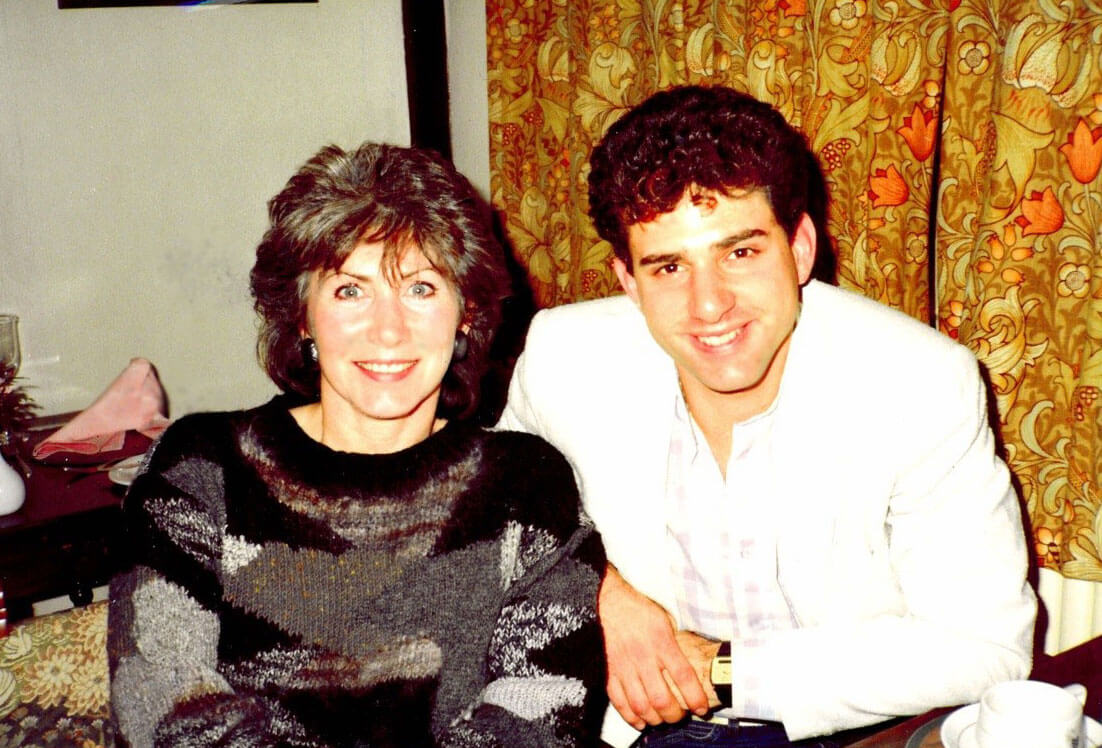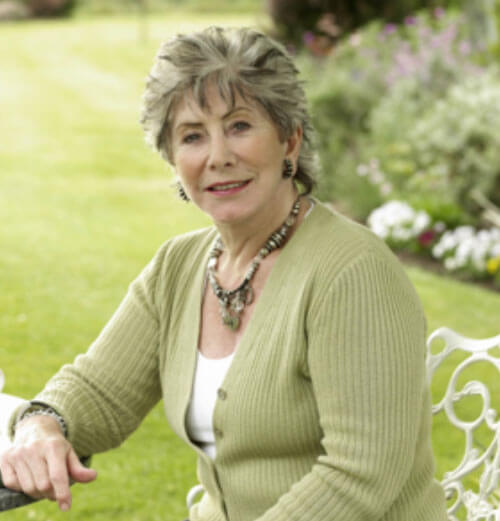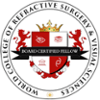Valerie Singleton and Her Treatments at London Vision Clinic

Valerie Singleton is a British television personality best known for her time presenting Blue Peter in the 1960s and 70s. Throughout her varied career, which also includes popular radio shows, Valerie has become a household name and has even been honoured with an OBE! In addition to being familiar with television and radio, Valerie is also no stranger to London Vision Clinic, where she has been for, not one, but two refractive surgeries!
In this article, Valerie tells us more about her history with London Vision Clinic, her friendship with Professor Reinstein, and, of course, her treatments at our world-renowned clinic.
A Chance Meeting
Valerie first met Professor Dan Reinstein – our founder and expert laser eye surgeon – on holiday at the Club Med in Tunisia in the early 1980s. At that time, Dan was playing the saxophone for guests in between his studies – a passion he continues to excel in to this day!
“Dan was out there working and would often perform saxophone for the guests. He is a brilliant saxophone plater!”
Shortly after this chance meeting, Dr Dan moved back to central London to continue his medical studies. Coincidentally, he was living just a stone’s throw from the BBC building where Valerie was presenting Radio 4’s afternoon show. Thanks to this close proximity, the pair would occasionally meet up for a drink and a catch-up.
However, Dan and Valerie eventually lost touch, and Valerie was unaware that Dan had gone off to pursue his specialisation in eye surgery over in America. It would be years before Valerie would hear from Dan again, as both were busy with travelling and work commitments.
But suddenly, in 2002, Valerie received an invitation featuring a familiar name: “Professor Dan Reinstein invites you to the opening of the London Vision Clinic at 8 Devonshire Place…” (the original home of London Vision Clinic before we moved to Harley Street in 2009).
The Inescapable Effects of Ageing Eyes
A few more years passed by and Valerie’s reliance on glasses and contact lenses for her developing presbyopia was beginning to become increasingly inconvenient. She would have to switch from glasses to wearing contact lenses (mainly when specs weren’t ideal for filming), leading to building frustration.

“I had been developing the concepts of PRESBYOND® Laser Blended Vision after my return from the USA so that I could work with more sophisticated and advanced equipment,” Professor Reinstein tells us.
“By 2004, I had completed the algorithms for a new way of improving Laser Eye Surgery to be able to treat reading vision.”
Shortly afterwards, in 2005, Valerie was among the first patients in the UK to benefit from Professor Reinstein’s revolutionary technique for treating presbyopia (ageing eyes).
“In 2005, I had the LASIK PRESBYOND® Laser Blended Vision procedure and it was absolutely amazing. Before surgery, Dan asked me, ‘What time is it?’, and gestured towards my watch, and of course, I couldn’t read it…I sat up after surgery and he repeated the question…I read my watch in an instant with no trouble at all. It was fantastic!”
Valerie’s Return for Cataract Surgery
While Valerie’s new blended vision had served her well for 13 years after her treatment, it eventually became apparent that she would require surgery to remove cataracts from her eyes.
Cataracts are a completely normal part of the eye’s ageing process, but if left untreated, they can lead to significant vision disruption. As the eye’s lens becomes more clouded by the cataract, it can make vision increasingly blurry to the point when vision can no longer be corrected with glasses or contact leses.
Valerie first began to notice the early signs of cataracts a year earlier, in 2017. She had noticed that driving at night was becoming more difficult – a common side effect of cataracts. These cloudy obstructions can cause glare in bright light conditions or at night around car headlights and street lamps. They can also significantly affect colour perception.
“Cataract development is not associated in any way with laser eye surgery. The lens that becomes a cataract is inside the eye, well away from the cornea which is the clear structure at the front of the eye which is altered by LASIK or SMILE. Almost everyone gets some age related changes to their lens, but only 1 in 3 people currently go on to have cataract surgery in their lifetime,” Professor Reinstein explains.
On her return to London Vision Clinic, Valerie was all set to have her cataracts removed and the lenses replaced with specialised intraocular lenses (IOLs).
“It is so nice to be back at the clinic again and you never know – I might even get to say hello to a very busy Professor Reinstein! My surgeon was brilliant at explaining everything, I felt very confident and assured throughout in his abilities. The clinic has a fantastic record and the follow-up process has been excellent.
Professor Reinstein commented: “It was a real pleasure to be able to have looked after Valerie’s vision for all these years, particularly as she first met me as a saxophone player and medical student!”
If you’d like to learn more about the treatments available at London Vision Clinic, don’t hesitate to get in touch with one of our friendly clinic coordinators today. Alternatively, to find out if you could be suitable for Laser Eye Surgery, book a consultation using the form below!


